When Paul Pickering was sixteen, he learned that the place where he’d taken his childhood vacations had once been the site of an indigenous massacre. This knowledge changed his life forever and transformed his perspective of what it meant to be Australian.
“It touched my heart,” Paul explained his feelings of sympathy, “[It was] a place that we had so many good times as a family…When I found that out, it really did impact me.”
He went on to dedicate his life and career to establishing a tour company called Sydney Outback, which honors Sydney’s Aboriginal heritage and advocates for the preservation of historic sites. It’s an extraordinary tour that showcases the Aboriginal history while challenging participants to consider another perspective.
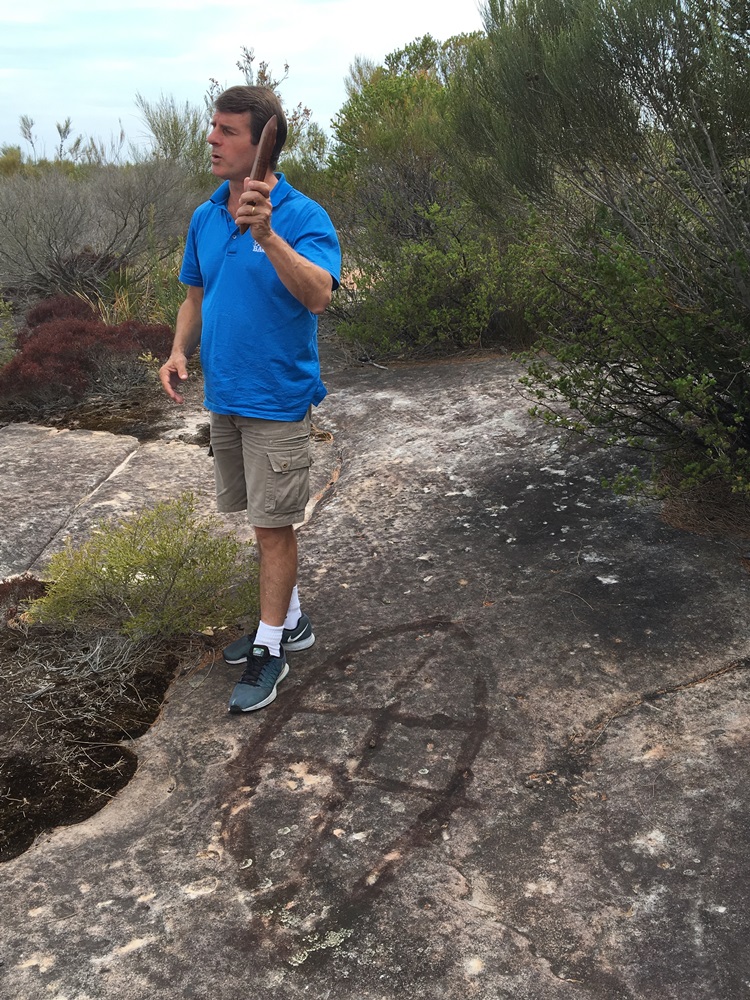 Paul is not of indigenous descent. In fact, he can trace his lineage back to the first British colonists to arrive in Sydney in 1788. But Paul hasn’t let the origins of his paternal ancestry hinder his life’s work, a passion project to educate visitors about Sydney’s indigenous beginnings and commemorate this pre-colonial society’s achievements.
Paul is not of indigenous descent. In fact, he can trace his lineage back to the first British colonists to arrive in Sydney in 1788. But Paul hasn’t let the origins of his paternal ancestry hinder his life’s work, a passion project to educate visitors about Sydney’s indigenous beginnings and commemorate this pre-colonial society’s achievements.
The Sydney Outback aboriginal heritage tours takes participants to the Ku-Ring-Gai National Park. First established in 1894, Ku-Ring-Gai is the third oldest national park in the world. Though it takes just thirty minutes to reach from Sydney’s city center, somehow this attraction is often overlooked. In fact, Sydney Outback is the only company that brings visitors to this park, so it’s rare for participants to encounter other visitors.
The Ku-Ring-Gai National Park is also home to the largest and most concentrated collection of indigenous cultural sites in the world, with fifteen hundred sites located within a twelve mile radius. The highlight of these sites is a sacred place where twenty massive rock carvings reveal the traditional narrative and astronomical wisdom of Sydney’s Guringai Aboriginal people.
“The three essential characters from the Guringai creation story are all present at this site,” Paul explains as he leads our group through the park, “They’re all in transformation from their earthly form to their celestial form and they all extend from the earth to the sky.”
Scientists have used carbon dating to determine that the carvings, which extend across a rocky precipice enclosed by dense forest shrubbery, were etched into sandstone by the Aboriginal people approximately five to seven thousand years ago.

“It’s a very mysterious site,” Paul explained, “There were an estimated three thousand Guringai people living here in 1788 and they were pretty much wiped out entirely by 1830. These sites have been left [virtually] unknown and untouched since that time.”
Untouched would be an understatement. British settlers in Sydney did so little to chronicle forty thousand years of pre-colonial history that as the Guringai died out, so did their story. To this day, most details about their history and culture remain largely unknown. What we do know about Aboriginal society would suggest that it was a well-connected network exhibiting complex social structures and religious philosophies.
“They had such an intimate understanding of their environment and the land that they lived on,” Paul described. “They relied on mother earth, which they saw as an extension of themselves. I really admire them for that.”
Currently, there are no significant preservation efforts being made to protect the sacred Aboriginal sites within the Ku-Ring-Gai National Park. The sandstone carvings, which are powerful to witness, are exposed to the elements. It won’t be long before they disappear due to weathering and erosion. He estimates that the carvings will wear away within twenty years time, as another chapter of indigenous history dissolves into the sands of time.
“These sites are suffering from severe states of degradation,” Paul lamented, “We’re doing all we can to work with the National Parks and Wildlife Service and also members of the Metropolitan Aboriginal Land Council to see what we can do to try to rehabilitate these sites and keep them in a condition that can be enjoyed by the future generations.”
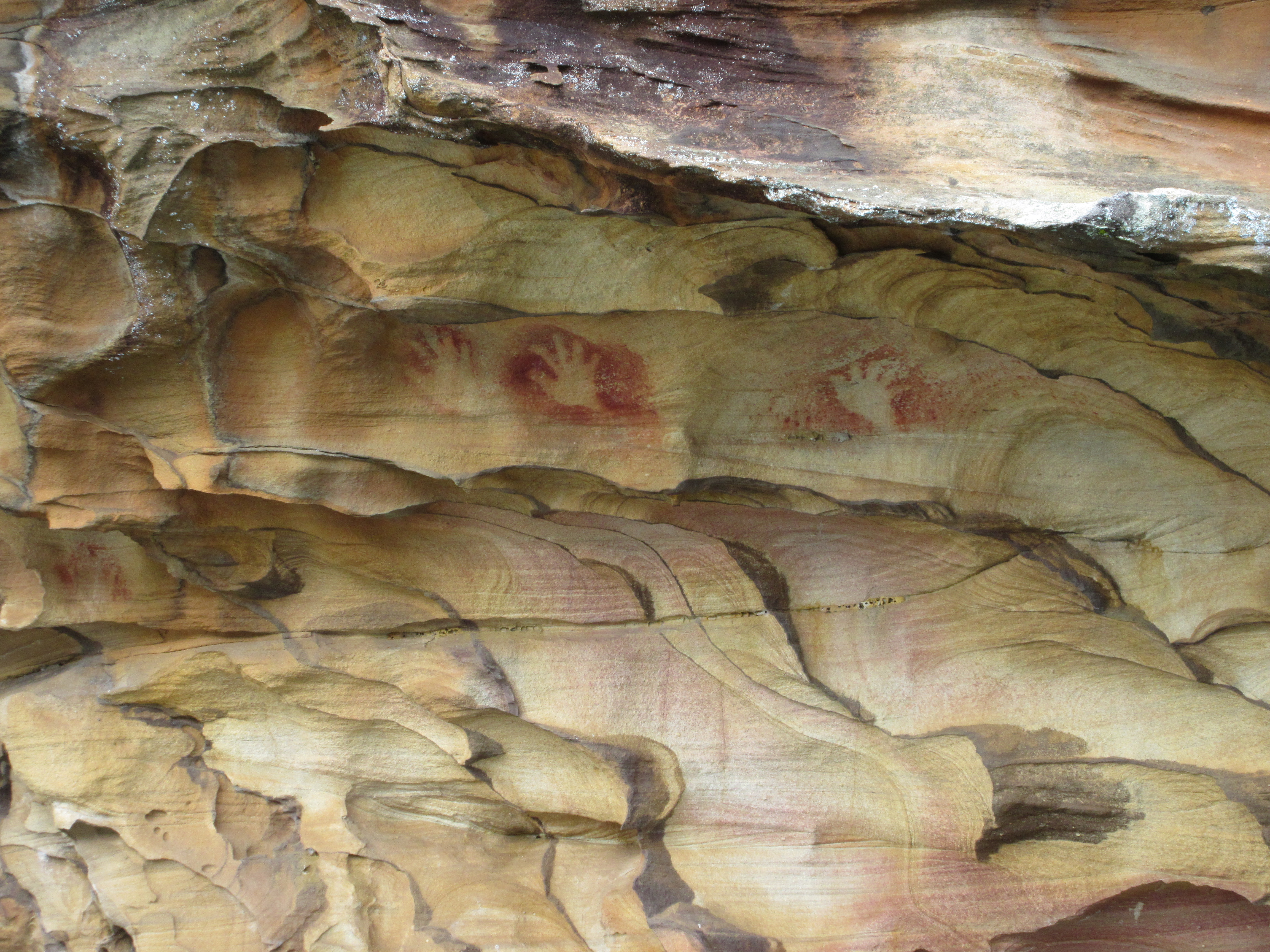
To date, progress has been slow in appealing to a government that doesn’t see the value in preserving these sacred engravings, which offer a rare glimpse into Australia’s pre-colonial history.
For fear of vandalism and desecration, the sacred rock carvings are closed to the public and the indigenous community asks that we do not divulge the exact location. Meanwhile, Paul has developed a close relationship with the Guringai Aboriginal Tribal Link, whose elders have granted him special permission to bring visitors to this site under close supervision. As a result, Sydney Outback is the only tour with exclusive access to these incredible relics of indigenous heritage.
“We do acknowledge the Guringai people, who have been nothing but cooperative,” remarks Paul, who conducts groups with great care and respect for the site, guiding visitors to step around the carvings with prudence. “It’s a real privilege and an honor to be able to, as a white person, bring people to this site. To them [the Guringai], it’s the most sacred site in the park.”
I asked Paul why the elders would grant him this unique access while hiding the site from the general public.
“Look,” Paul explained, “unless people like us – whether you’re from Australia, Germany, America [or wherever] – unless individuals like us take a particular interest and go home and talk about the Aboriginal culture, that culture will remain lost in time. That’s what’s happened [thus far]. It’s through people like us talking about it that the culture will live on.”
The Metropolitan Local Aboriginal Land Council, which represents Aboriginal affairs in the Sydney metropolitan region, promotes the protection of their cultural heritage by educating the broader community about the significance of Aboriginal culture, heritage and sites. They encourage talks and tours that teach visitors about Aboriginal culture as well as their relationship to the land and the natural environment. The Australian government maintains that within the Aboriginal community, tourism is seen as a practical, important way to ensure that their heritage is supported.
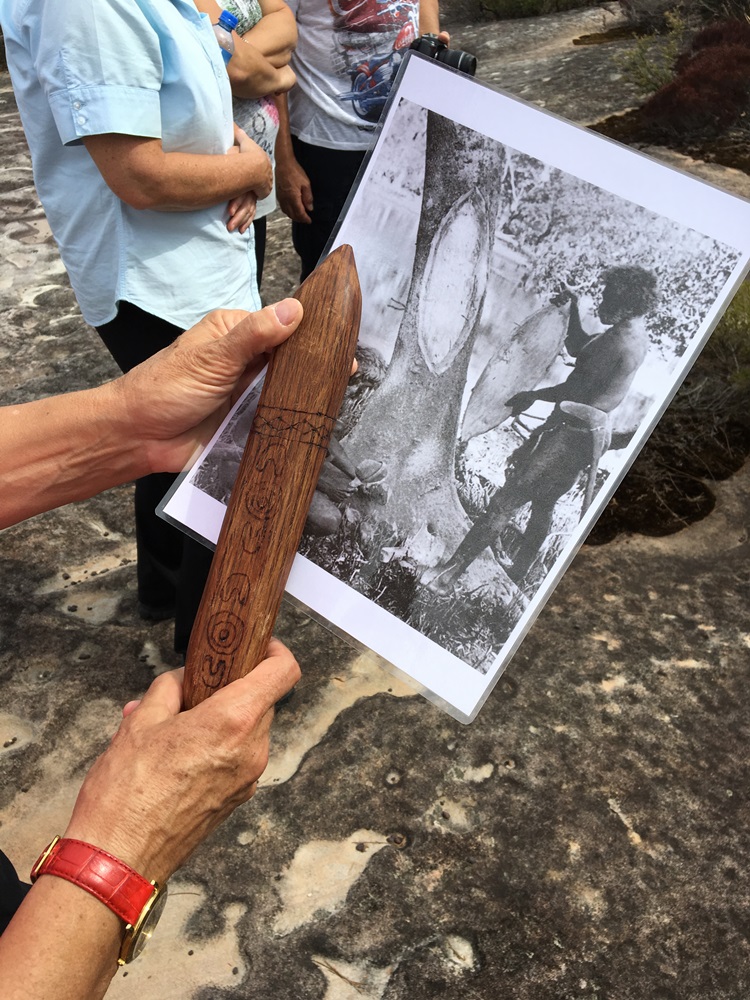
I asked Vicky, who was born in the UK but now lives in Sydney, why she had signed up to experience the Sydney
Outback Aboriginal heritage tour.
“To learn more about Aboriginal culture and indigenous Australians,” she replied, “it’s a part of Australia’s history that gets forgotten. We tend to start at 1788 when the first fleet landed. We forget that the aborigines were here for forty thousand years before us, and it was their land.”
Perhaps the disenfranchisement of indigenous cultures becomes even more topical in the light of current events. In the United States, the government has used excessive force in an attempt to evict indigenous people from the Sioux reservations of Standing Rock, North Dakota. This is happening so oil companies can build pipelines that desecrate sacred sites and ancestral burial grounds while ignoring the value of the indigenous Sioux’s culture and history. It’s a travesty that goes largely unreported by mainstream media, which denies the indigenous people a voice along with the power to defend their heritage.
This modern day deportment mirrors that of the colonists, who used excessive force to remove the indigenous people from the Guringai’s territory around Sydney, Australia. They did it in the name of expansionism, without any respect for the value of the Guringai’s culture and history. There was little attempt made on behalf of the English to understand the language and culture of the indigenous people, which led to the loss of Aboriginal heritage.
Some might say history is doomed to repeat itself. Yet, this cycle of oppression is broken by individuals like Paul, who are choosing to stand on the right side of history.
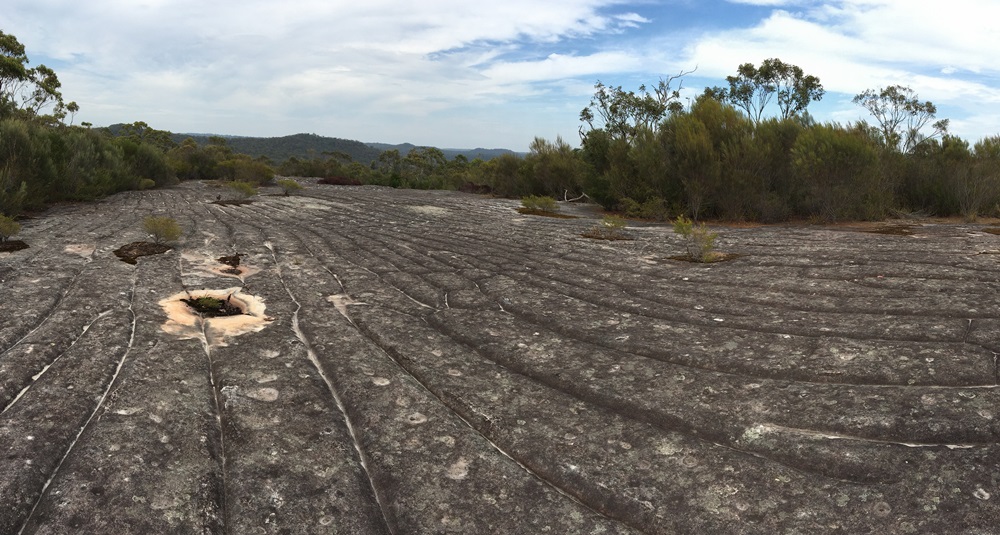
“To me,” Paul described, “these [the Guringai] are the original inhabitants of Sydney. They are essentially my ancestors and, unfortunately for the Aborigines, that land was taken away from them very, very quickly. A land that they’d occupied for forty thousand years – within just forty years – it had been taken away from them. If I could just do my little bit to reconcile the differences that exist to this day between the white man and the black man, then I’d be very happy to do that.”
I believe that people like Paul exemplify what it means to show compassion for all humankind. While he acknowledges the role his own ancestors played in this story, Paul turns the tide by advocating for cultural understanding. By educating visitors about Sydney’s Aboriginal people, Paul lends his voice to a culture that’s been subjected to silence.
 “Hopefully though my tour and through international tourism,” he remarked, “I can promote this amazing story of the Aboriginal people here in Sydney, get people talking about it, [and] inspire an interest in the culture.”
“Hopefully though my tour and through international tourism,” he remarked, “I can promote this amazing story of the Aboriginal people here in Sydney, get people talking about it, [and] inspire an interest in the culture.”
Paul begins to fulfill this mission by offering authentic, off-the-beaten-path experiences while advocating improved cultural understanding. That is why Tours4Fun is proud to connect travelers with Sydney Outback and other eye-opening cultural tours.
Take the trip to Ku-Ring-Gai Chase Natioanl Park with Sydney Outback to experience it for yourself!
“Australian Indigenous Cultural Heritage | Australia.gov.au.” Department of the Prime Minister and Cabinet. Digital Transformation Agency, 31 Mar. 2015. Web. 14 Dec. 2016.
“Core Business.” Metropolitan Local Aboriginal Land Council. MetroLALC, 2015. Web. 14 Dec. 2016.
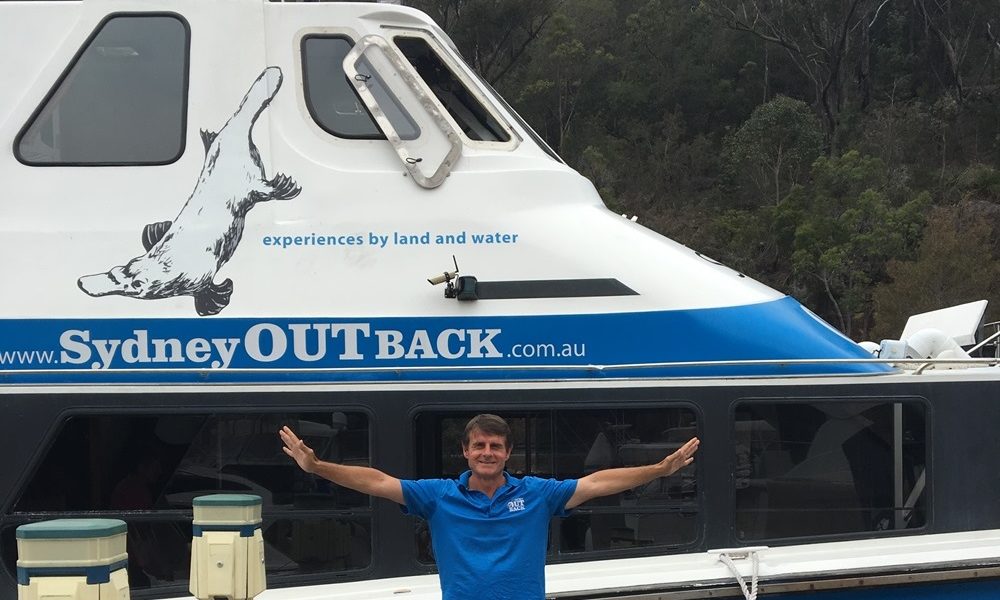
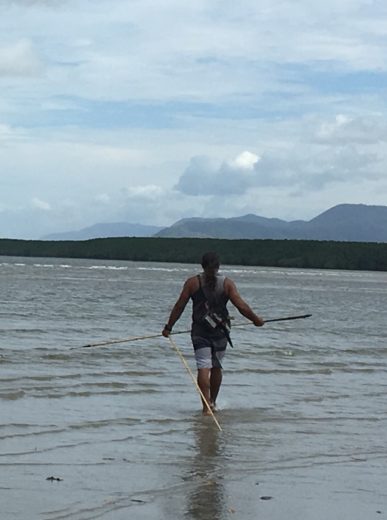




WE chose to take Paul's Sydney Outback tour for the reasons mentioned above: to learn about the aboriginal culture and find unique cultural sites off the beaten path. We enjoyed both segments of the Ku-Ring-Gai National Park, by land to the cultural engraving sites and vistas, and by boat through the beautiful waterways to hidden rock paintings. Paul is truly passionate about and amazing at what he does, educating his guests to the fullest extent with maps, photos, artifacts, hands-on opportunities (didgeridoo and weapons) and demonstrations. In addition to aboriginal culture, we learned about the colonization, flora and fauna of the Sydney region. Paul is so thoughtful and prepared, providing snacks in the morning, a FULL (dare I say luxury) lunch with a gourmet chicken salad wrap, burger and bbq kangaroo focaccia sandwich (all with fixings like sautéed onion and beets, etc.), afternoon coffee/tea with fruit and sweets, and even a stop for (optional) ice cream. He has thought of everything! Seriously, this was an AMAZING tour that touched on every aspect of culture, environment, and history, as well as vistas, bushwalking and boating. Bravo Paul and Sydney Outback Tours! Than you for the awesome experience!!!